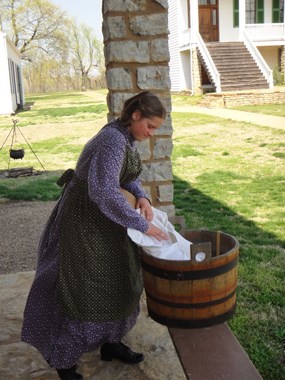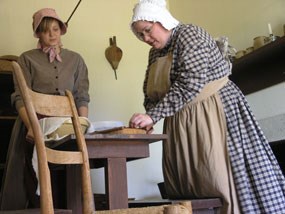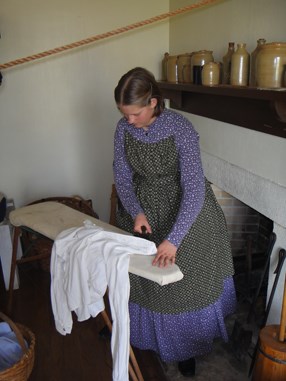
NPS Soldiers at Fort Scott had their laundry done three times a week in the summer and two times a week in the winter. Laundry was an all-day affair, and each laundress was responsible for fifteen soldiers. This meant they spent six days each week working. Soak, Scrub, RepeatAn involved process, doing laundry had several steps:

NPS Tieing up Loose EndsMending was done either before or after washing depending on the condition of the item being mended.

NPS Straightening it OutIroning was an unpleasant task that was done after the day's washing. Then, as now, ironing was done to remove the wrinkles from the fabric. Prior to ironing, the garment would be sprinkled with water to make the fibers softer.
Information on this page from: Virginia Mescher, Laundry and Cleaning Practices of the Mid-Nineteenth Century. Nature's Finest, 1994. Experience more Life on the FrontierBack to Virtual Resource Center Home |
Last updated: June 3, 2022
